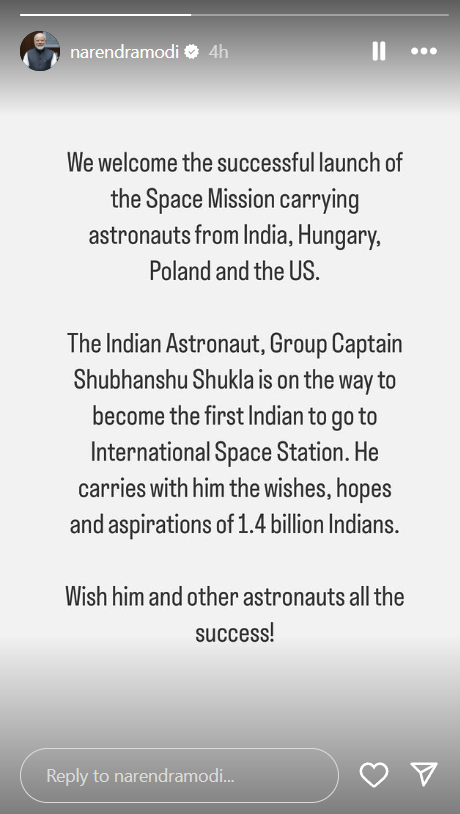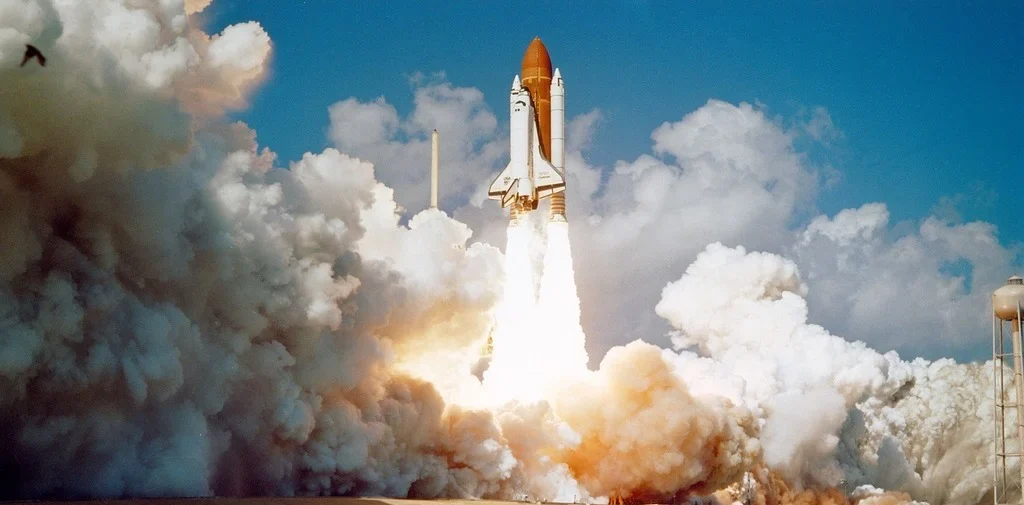In a defining moment for Indian space exploration, Group Captain Shubhanshu Shukla of the Indian Air Force has embarked on a historic journey to the International Space Station (ISS) as part of Axiom Mission 4 (Ax-4). Launched aboard SpaceX’s Crew Dragon capsule from NASA’s Kennedy Space Center at 12:01 PM IST on June 25, 2025, the mission marks India’s first human presence on the ISS—and only the second Indian in space after Rakesh Sharma’s 1984 mission.

A Collaborative Global Effort
Ax-4 is a joint mission by Axiom Space, NASA, and SpaceX. Alongside Shukla, the international crew includes mission commander and seasoned NASA astronaut Peggy Whitson, Hungarian engineer Tibor Kapu, and Polish scientist Slawosz Uznanski-Wisniewski. Their capsule is expected to dock with the ISS by 4:30 PM IST on June 26.
Shukla’s presence aboard this mission is more than symbolic—it’s a reflection of India’s growing space capabilities and its rising prominence in the global scientific community.
From Dream to Reality: India’s Space Evolution
Shukla’s journey signals a pivotal moment for ISRO and India’s wider scientific vision. Once focused on reaching orbit, India is now preparing for long-term space habitation. Dr. N. Kalaiselvi, Secretary of the Department of Scientific and Industrial Research, captured this shift in vision during a post-launch event, saying, “We’re no longer asking if we can reach space. Now, we’re asking how we can live there.”
India’s Science in Orbit
On board the mission are seven Indian scientific experiments, ranging from biomedical research to space agriculture and food science. These projects have been developed by leading Indian institutions, aiming to gather data that could aid future missions—including potential moon or Mars habitation.
Kalaiselvi emphasized, “More than the number of experiments, it is the courage and scientific maturity behind them that matters. Indian science is no longer confined to the lab. It’s now orbiting the Earth.”
Indian Cuisine Takes to the Stars
Among the items aboard: specially curated Indian space food kits. Developed by public R&D organizations, these kits aim to meet both the nutritional and emotional needs of astronauts in space. “This is more than food,” Kalaiselvi noted. “It’s culture, comfort, and innovation—all packed into one.”
National Pride Meets Global Collaboration
Prime Minister Narendra Modi hailed the launch as a proud moment for 1.4 billion Indians. “Group Captain Shukla carries the dreams of every Indian into space,” he stated. President Droupadi Murmu echoed this, calling the mission a milestone in India’s growing stature in space and diplomacy.
A Prelude to Gaganyaan and Beyond
While Ax-4 is a commercial mission, many see it as a crucial stepping stone for India’s own human spaceflight program—Gaganyaan, expected to launch in 2026. Shukla’s role as a pilot on an international mission not only boosts India’s technical credibility but also provides invaluable experience ahead of ISRO’s indigenous astronaut launch.
“This isn’t just a ride-along,” Kalaiselvi said. “It’s a rehearsal, a partnership, and a promise that India’s space ambitions are global, sustainable, and deeply scientific.”
Delays, Weather, and Launch Day Drama
Originally slated for late May, the Ax-4 mission faced multiple delays due to weather and technical readiness. The successful liftoff on June 25 came after weeks of anticipation. Now, with docking scheduled on June 26, the crew will spend nearly two weeks aboard the ISS, conducting experiments and outreach.
Upon return in early July, findings from the mission will be shared with ISRO, CSIR, and India’s expanding private space sector.
Inspiring a Generation
As the Crew Dragon orbits Earth, it carries not just astronauts, but aspirations. Kalaiselvi’s closing message was for India’s youth:
“Science is eternal. Believe in it, pursue it. India’s future lies in innovation, education, and space. This is just the beginning.”
Prime Minister Narendra Modi shared his pride via Instagram Stories, stating:

What’s Next?
With nearly two weeks aboard the ISS, the crew will conduct research, outreach, and return to Earth in early July. Upon their safe return, the results of India’s onboard experiments will be shared widely—with ISRO, CSIR, DRDO, and private space enterprises watching closely.













